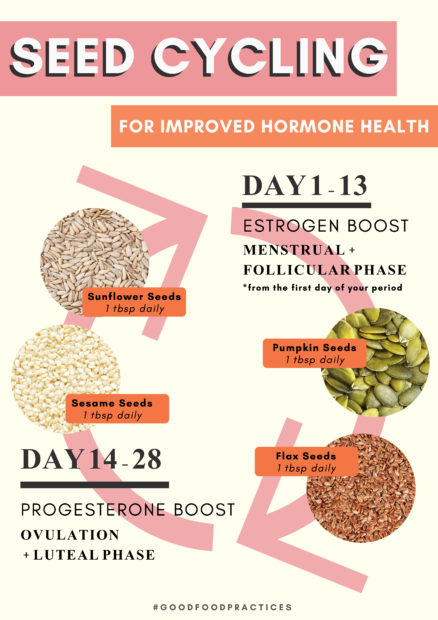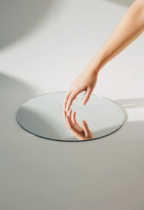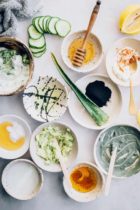This post is a part of Sprig & Vine’s month of wellness 2019: expect Good Food Good Vibes all January long! We will be posting content throughout January that will help you kickstart the year feeling well and good, with healthy eating hacks, feel-good recipes, and tons of wellness inspiration.
When your hormones are out of balance, the signs are obvious. Breakouts, irregular periods, fatigue, headaches, insomnia, mood swings, anxiety, weight gain — they’re all glaring signs that your endocrine system is suffering. While it’s essential to visit your ob-gyn for a complete assessment of any persistent symptoms you’re experiencing (as they may be linked to larger underlying conditions); lately I’ve been reading a lot about using diet as medicine to support hormone health.
Seed cycling is a natural, healthy method of using various seeds to support different phases of the menstrual cycle in order to to balance hormones in menstruating women.
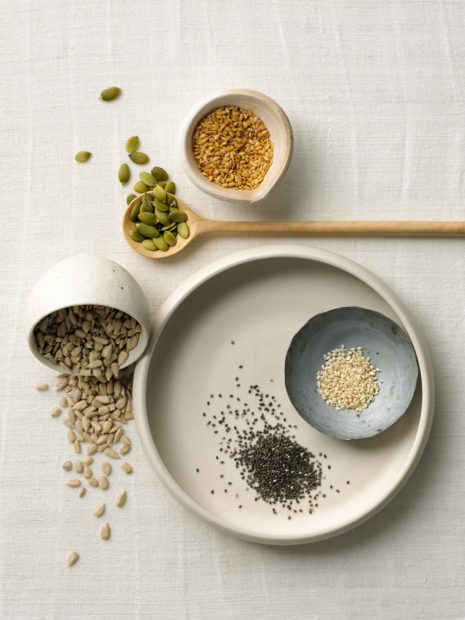
Photo via @thewomenswellnesscollective
So, what is seed cycling?
When you seed cycle, you rotate different seeds into your diet in accordance with the phases of your menstrual cycle to improve hormonal health. Specific seeds are chosen because they have estrogen/progesterone promoting properties that gently encourage your cycling hormones. The idea is that the seeds contain certain oils and nutrients that help the body to produce, release, and metabolise hormones for each phase of the menstrual cycle. The four types of seeds that are consumed in rotation are — flax, pumpkin, sesame, and sunflower seeds.
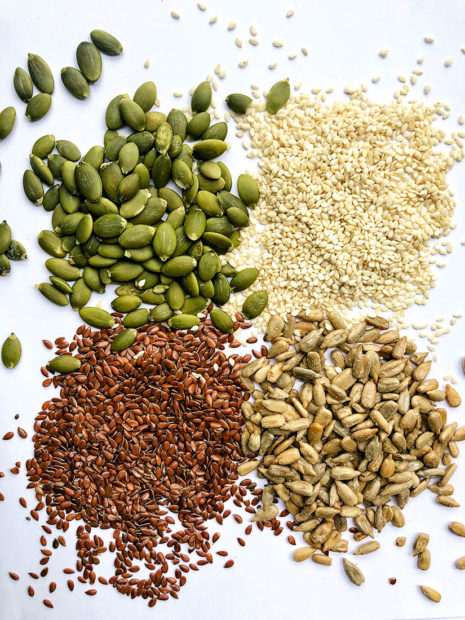
Photo via www.theemilymorrow.com
Why you should try it
Proponents of seed cycling say it may help balance hormones, reduce PMS symptoms, trigger a period if it’s absent, increase fertility, and also support conditions like PCOS, endometriosis, and ovarian cysts. While all menstruating women can benefit from seed cycling, it’s a specially useful strategy for those who are suffering from irregular periods and brutal PMS. It is also believed to help combat hormonal acne, fatigue, and irregular periods — all things commonly associated with out of whack hormones.
Seed cycling is an incredibly easy and inexpensive way to support the female body without consuming artificial hormones (like birth control). Though seeds can’t be used in place of hormonal pills (if you’re taking them for deeper health concerns), nor will they heal all your hormonal issues; but it is an all-natural method that may support your journey to healthier, happier hormones, which means it’s worth trying out.
How to seed cycle
In order to seed cycle, you need to consume one tablespoon each of specific seeds per day to boost estrogen/progesterone levels during different phases of your monthly cycle.
PHASE 1: Days 1-13
The menstrual and follicular phase begins on the first day of your monthly period, and usually lasts for 14 days (for an average 28 day cycle). During this phase, your estrogen levels start low and gradually increase in preparation for ovulation.
Start phase 1 cycling on the first day of your period, and continue for approximately 14 days. Eat 1 tablespoon of either flax or pumpkin seeds daily to boost estrogen.
FLAX
- High in lignans to block excess estrogen production
- High in omega 3s
PUMPKIN
- Rich in zinc, which supports progesterone secretion in the next phase
- High in omega 3s
PHASE 2: Days 14-28
The ovulation and luteal phase begins on the 14th day of your cycle (for a average 28 day cycle). During this phase, there is a sudden drop in estrogen after ovulation, and progesterone levels rise steadily.
Start phase 2 cycling two weeks into your monthly cycle (after ovulation) and continue until your next period. Eat 1 tablespoon of either sesame or sunflower seeds daily to boost progesterone.
SESAME
- Contains lignans to regulate estrogen and progesterone
- High in omega 6s
SUNFLOWER
- High in selenium, which is good for balancing hormones
- High in omega 6s
To make it easier for you to remember what seeds to eat when, here’s a handy printable poster with all the info. Screenshot it for your phone wallpaper, or print it and put it on your fridge/desk!
Ways to add seeds to your meals
Flax seeds are great blended into smoothies, or sprinkled on top of fruit and salads. You can also make “flax eggs” to replace regular eggs in vegan versions of your favourite baking recipes — they work specially well with tea cakes, breads, and muffins.
Pumpkin seeds are wonderful on their own, roasted with spices. They make great toppings for salads, soups, and grain bowls. I love adding them to homemade granola and dukkah too. Alternatively, you can also consume pumpkin seed butter.
Sesame seeds can be sprinkled on bowls or salads, noodles and rice bowls. Tahini, which is basically ground sesame seeds, is also a great way to get in more sesame when seed cycling. Add tahini to hummus, salad dressings, or drizzle it over roasted veggies.
Sunflower seeds can be enjoyed as a topping on salads. You can roast them with some sea salt and eat them as a delicious snack; and add some sunflower seed butter on toast or with apples.
Things to remember when seed cycling
- Add 1 tablespoon of the corresponding seeds to your diet daily, either in whole, ground, or butter form.
- Always buy your seeds raw, whole, and unsalted. Toast them or grind them on your own just before consuming (not in advance as they begin to oxidise 15 minutes after being ground).
- Store seeds in jars in the fridge to keep them for longer.
- As with any natural health strategy, it takes time for the effects to show. Don’t expect overnight improvement in your symptoms — continue seed cycling for a few months and take note of small changes that you might experience.
- Don’t stress if you forgot to eat the appropriate seeds on the right days. Use this as a general guide for some extra support to your endocrine system. You’re more likely to stick to it longterm if you’re not extremely strict about it — stressing about missing your daily seeds will likely cause more harm to your hormone levels.
- Seed cycling is also a way to expand your diet. Having different seeds on rotation ensures you’re not stuck in a rut, and can inspire you to cook new recipes.
- If you’re prone to hormonal related imbalances (even though your PCOS might be in check now), seed cycling is for you. Even if you don’t suffer from any such conditions, you can still benefit from seed cycling. It’s an easy way to support your hormones, and may help to keep them balanced.
FYI: This feature is for informational purposes only; Sprig & Vine does not give medical advice. Views and opinions expressed in this article are the author’s own. Please consult with a medical professional when required.
Do you seed cycle? Let us know how it has helped you.
Leave a comment, or tag @sprigandvine.in on your photos on Facebook and Instagram with the hashtag #goodfoodpractices

